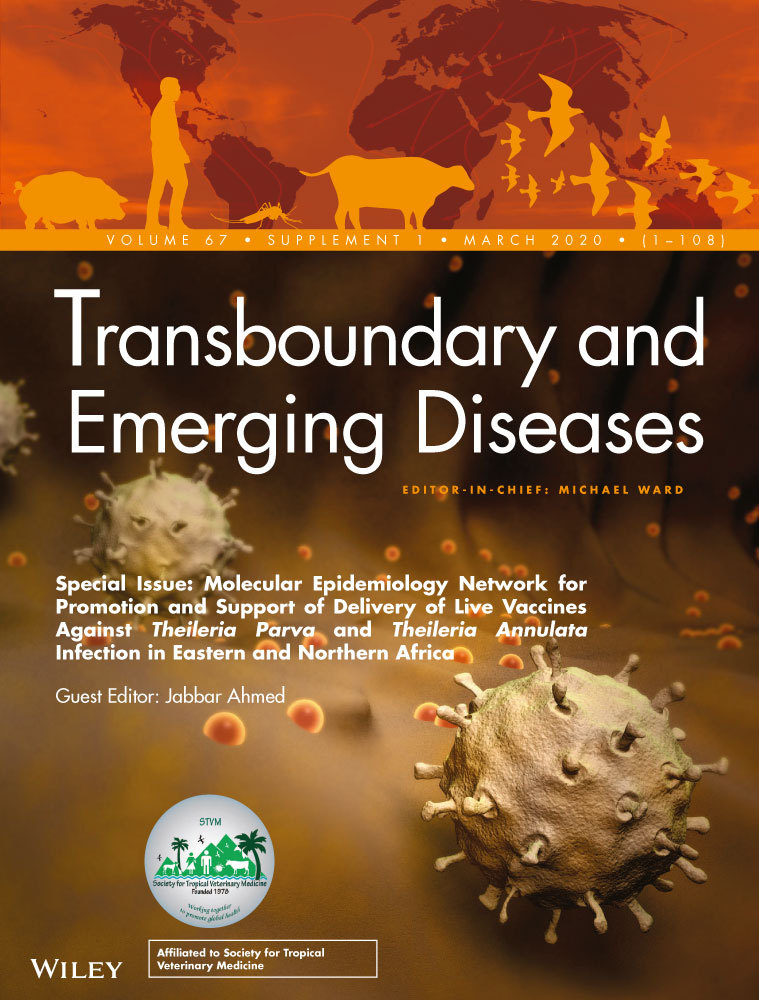Multilocus genotyping of Theileria parva isolates associated with a live vaccination trial in Kenya provides evidence for transmission of immunizing parasites into local tick and cattle populations
Abstract
The live infection and treatment (ITM) vaccination procedure using the trivalent Muguga cocktail is increasingly being used to control East Coast fever, with potential implications for Theileria parva population genetic structure in the field. Transmission of the Kiambu V T. parva component to unvaccinated cattle has previously been described in Uganda. We monitored the T. parva carrier state in vaccinated and control animals on a farm in West Kenya where an ITM stabilate derived from the Kenyan T. parva Marikebuni stock was evaluated for field efficacy. A nested PCR‐based Marikebuni‐specific marker identified a carrier state in nine of ten vaccinated animals, detectable for a period of two years. We used 22 variable number tandem repeat (VNTR) markers to determine multilocus genotypes (MLGs) of 19 T. parva schizont‐infected lymphocyte isolates derived from cattle and field ticks. Two isolates from unimmunized cattle were identical to the Marikebuni vaccination stock. Two cattle isolates were identical to a Muguga cocktail component Kiambu V. Seven isolates from ticks exhibited MLGs that were identical to the Serengeti/Muguga vaccine stocks. Six cattle and two tick‐derived stocks exhibited unique MLGs. The data strongly suggest transmission of immunizing genotypes, from Marikebuni vaccine‐induced carrier cattle to unimmunized cattle. It is possible that genotypes similar to those in the Muguga cocktail are present in the field in Western Kenya. An alternative hypothesis is that these parasites may have originated from vaccine trial sites in Eastern Uganda. If correct, this suggests that T. parva stocks used for immunization can potentially be disseminated 125 km beyond the immediate vaccination site. Regardless of their origin, the data provide evidence that genotypes similar to those in the Muguga cocktail are circulating in the field in East Africa, alleviating concerns about dissemination of ‘alien’ T. parva germplasm through live vaccination.

